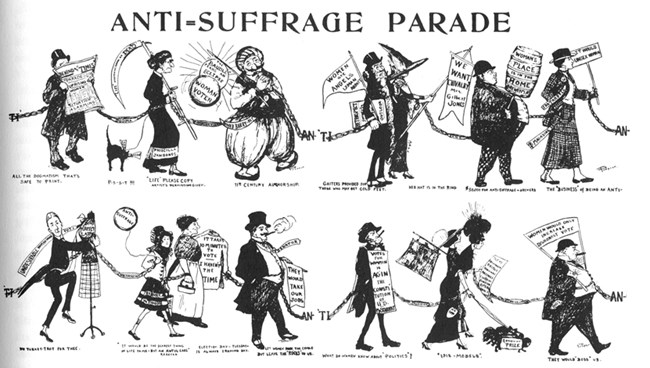Last updated: April 12, 2023
Article
Victorians and Women's Suffrage

Library of Congress
Many women in the Victorian period were part of the Anti-Suffragists movement. They thought the suffrage movement to be un-American and would break up the family unit. Some women were not as passionate as the Anti-Suffragist, and considered their movement to be unnecessary. Many women of higher status thought they were able to make change through the positions of their husbands, and considered themselves more of an equal to their husbands and due to their educations and work responsibilities in the home.
Other women recognized that for most suffragists, there was still a primarily white agenda. Individuals like Charlotte Forten Grimke, Mary Ann Shadd Cary, and Mary Church Terrell advocated for women of color to have a right to participate in the election of government officials. Although the amendment was successful, and ratified in 1920, it still did not provide ALL women the right to vote. Native American women as an example were not considered U.S. Citizens until 1924, and therefore denied their right to vote. Many African American women were kept from the polls, and were discouraged from voting through racial intimidation, violence, and fear. Additionally, women who were convicted of a crime were also barred from voting, even if they had served their sentence.
Learn more about the complex history of the women's suffrage movement
